Monteverdi Vespro Della Beata Vergine
Raphaël Pichon, Pygmalion - Monteverdi: Vespro della Beata Vergine (2023) Music
Posted by ArlegZ at Feb. 27, 2024
Raphaël Pichon, Pygmalion - Monteverdi: Vespro della Beata Vergine (2023)
EAC | FLAC | Image (Cue & Log) ~ 511 Mb | Total time: 01:42:47 | Scans included
Classical | Label: Harmonia Mundi | # HMM 902710.11 | Recorded: 2022
EAC | FLAC | Image (Cue & Log) ~ 511 Mb | Total time: 01:42:47 | Scans included
Classical | Label: Harmonia Mundi | # HMM 902710.11 | Recorded: 2022
After ‘Stravaganza d’amore’, their superb album of late sixteenth-century Florentine music, Raphaël Pichon and Pygmalion return to Italy, this time to Mantua. Here they offer us their reading of one of the peaks of sacred music from this period: Monteverdi’s Vespers. Revealing like no other interpreters the poignant interiority of these pieces, they bring out to the full their inherent sense of theatre. An overwhelming experience.
L'Arpeggiata, Christina Pluhar - Monteverdi: Vespro della Beata Vergine (2011) Music
Posted by tirexiss at Feb. 13, 2019
L'Arpeggiata, Christina Pluhar - Monteverdi: Vespro della Beata Vergine (2011)
EAC | FLAC (tracks+.cue, log) | Covers Included | 01:15:08 | 373 MB
Genre: Classical | Label: Virgin Classics | Catalog: 6419942
EAC | FLAC (tracks+.cue, log) | Covers Included | 01:15:08 | 373 MB
Genre: Classical | Label: Virgin Classics | Catalog: 6419942
It's not easy to pinpoint precisely what makes Christina Pluhar and L'Arpeggiata's performances of Baroque music, particularly Monteverdi, so extraordinary and distinctive, even in a time – the early 21st century – when (pardon the oxymoron) exceptionally fine recordings of this repertoire are the rule rather than the exception. One element may be the inventiveness of her realizations of the continuo part.
John Eliot Gardiner, English Baroque Soloists, Monteverdi Choir - Monteverdi: Vespro della Beata Vergine (2003/1989) Music
Posted by Vilboa at April 12, 2023
John Eliot Gardiner, English Baroque Soloists, Monteverdi Choir - Monteverdi: Vespro della Beata Vergine (2003/1989)
NTSC 4:3 (720x480) | Latin | LinearPCM, 2 ch | Dolby AC3, 6 ch | DTS, 5 ch | 7.80 Gb (DVD9) | 90 min + 20 min (bonus)
Classical | Deutsche Grammophon | Sub: Deutsch, Francais, Espanol, Chinese
NTSC 4:3 (720x480) | Latin | LinearPCM, 2 ch | Dolby AC3, 6 ch | DTS, 5 ch | 7.80 Gb (DVD9) | 90 min + 20 min (bonus)
Classical | Deutsche Grammophon | Sub: Deutsch, Francais, Espanol, Chinese
“This large-scale live recording (Gardiner's second) was made in Venice's St Mark's Basilica. It captures the drama as well as the ceremonial aspect of the work, despite sometimes cloudy recorded sound.” Gramophone Classical Music Guide. “Gardiner's second [recording of the Vespers], spectacularly recorded live in St Mark's, has a punchy choral sound, near-operatic solo singing (Bryn Terfel and Alistair Miles are among the basses), emphatic enunciation, big contrasts and deliberate exploitation of the building's spaces. Its outright theatricality sets it apart from other performances.” Gramophone Magazine.
Jordi Savall & La Capella Reial - Monteverdi - Vespro Della Beata Vergine, 1610 (1989) {2CD Astree-Auvidis E 8719} Music
Posted by ruskaval at May 12, 2017
Jordi Savall & La Capella Reial - Monteverdi - Vespro Della Beata Vergine, 1610 (1989) {2CD Astrée-Auvidis E 8719}
EAC rip (secure mode) | FLAC (tracks)+CUE+LOG -> 438 Mb | MP3 @320 -> 224 Mb
Full Artwork @ 300 dpi (jpg) -> 66 Mb | 5% repair rar
© 1989 Astrée / Auvidis | E 8719
Classical / Renaissance / Baroque / Choral
There are more than one dozen recordings of Monteverdi's great masterpiece, the Vespers of 1610, a distinction reserved for very few works and composers from the late 16th and early 17th centuries. With this kind of attention, you'd think that this substantial work for choir, soloists, and instruments would be more easily accessible–but it is in fact a structurally complex and musically intricate compilation of hymns, antiphons, and psalms, concluding with a magnificent setting of the Magnificat. Most recordings can't seem to overcome the strategic and technical problems of presenting such a three-dimensional work on a recording. But this one is different: the music literally comes alive and grabs our attention. If you're in the market for Monteverdi's Vespers, look no further. This is the most dynamic, dramatic version on disc.
Bruno Boterf, Ludus Modalis - Claudio Monteverdi: Vespro della Beata Vergine (2018) Music
Posted by ArlegZ at July 3, 2025
Bruno Boterf, Ludus Modalis - Claudio Monteverdi: Vespro della Beata Vergine (2018)
EAC | FLAC | Image (Cue & Log) ~ 418 Mb | Total time: 90:37 | Scans included
Classical | Label: Ramée | # RAM1702 | Recorded: 2017
EAC | FLAC | Image (Cue & Log) ~ 418 Mb | Total time: 90:37 | Scans included
Classical | Label: Ramée | # RAM1702 | Recorded: 2017
The present recording constitutes more than just a new version of the Vespers. It is the first recording of the Vespers in the alternative version proposed by the composer, without concertato instruments. It reveals the underlying matrix of the work we all know, the ‘original version’ to which Monteverdi added concertato instruments for use in large-scale performances. Respecting the structure of the Office of Vespers, Ludus Modalis has chosen to frame the psalms with the antiphons corresponding to a Marian ceremony.
Monteverdi - Vespro Della Beata Vergine (Rinaldo Alessandrini) [2004] Music
Posted by Sowulo at April 28, 2014
Monteverdi - Vespro Della Beata Vergine (Rinaldo Alessandrini) [2004]
EAC Rip | FLAC, IMG+CUE, LOG | Covers | 2cd, 503 MB
Classical | Label: Naïve | Catalog Number: OP 30403 | TT: CD1:50’11, CD2'55:16
EAC Rip | FLAC, IMG+CUE, LOG | Covers | 2cd, 503 MB
Classical | Label: Naïve | Catalog Number: OP 30403 | TT: CD1:50’11, CD2'55:16
Rinaldo Alessandrini's brilliantly realized recording of Monteverdi's Vespers is an intimate, slightly pared down version of the early Baroque masterpiece. Working in the warm acoustic of Rome's Palazzo Farnese, he employs just one singer per part, and eliminates instrumental doublings in the choral movements except where they are expressly indicated. The result is a compact, richly haloed sound that won't ever knock you out of your chair, but which flatters the more intimate solo and duet movements that can sound anemic in grander productions; with the sound gap between the biggest and smallest movements closed, each holds its own within the overall structure of the piece…
Claudio Monteverdi - Vespro della Beata Vergine - René Jacobs & Concerto Vocale Music
Posted by Flush at June 8, 2006
Claudio Monteverdi - Vespro della Beata Vergine - René Jacobs & Concerto Vocale
Classical, Sacred, Vocal | APE (Single Tracks) dBPoweramp | 2CD/429MB | RS.com
Classical, Sacred, Vocal | APE (Single Tracks) dBPoweramp | 2CD/429MB | RS.com
A flamboyant manifesto of the Baroque Revolution. In autumn of 1610 Monteverdi dedicated a luxuriant collection of religious music to Pope Paul V, of which the "Vespers of the Blessed Virgin" is by far the most prodigious work. A spectacular synthesis of Franco-Flemish polyphony and Italian innovations, this impressive monument imposed itself as the standard-bearer of the Monteverdian revolution. But the real miracle is his ability to reconcile solemnity and suavity with the most genuine fervour.
My Blog | Online
Monteverdi - Vespro Della Beata Vergine Music
Posted by rotro at Oct. 9, 2008
Monteverdi - Vespro Della Beata Vergine
Genre: Classical | FLAC, CUE | 2 CDs, Covers | 415 Mb | RS.com
Audio CD (October 12, 1990)
Genre: Classical | FLAC, CUE | 2 CDs, Covers | 415 Mb | RS.com
Audio CD (October 12, 1990)
Claudio Monteverdi - Vespro Della Beata Vergine (Les Arts Florissants/William Christie) Music
Posted by hanswurst at Oct. 18, 2008
Claudio Monteverdi - Vespro Della Beata Vergine
Genre: Renaissance | 2CD | FLAC (CUE+LOG) | 80'05 | Covers & Booklet (.pdf) | 250 Mb
July 1997 (1998 release) | Publisher: Erato 3984-23139-2
RapidShare
Genre: Renaissance | 2CD | FLAC (CUE+LOG) | 80'05 | Covers & Booklet (.pdf) | 250 Mb
July 1997 (1998 release) | Publisher: Erato 3984-23139-2
RapidShare
Monteverdi - Vespro Della Beata Vergine (Gardiner) [DVD 9] Music
Posted by dino63 at Oct. 12, 2009
Monteverdi - Vespro Della Beata Vergine (Gardiner) [DVD 9]
DVD | NTSC | 7.78 GB | Scans | 3% Recovery
Classical | Archiv | 1989, 2003
DVD | NTSC | 7.78 GB | Scans | 3% Recovery
Classical | Archiv | 1989, 2003
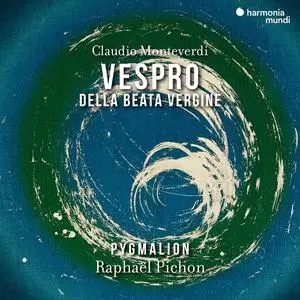
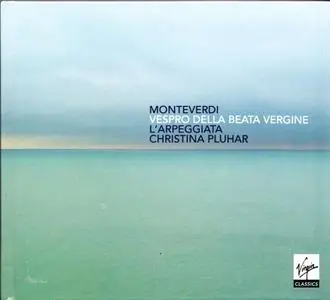
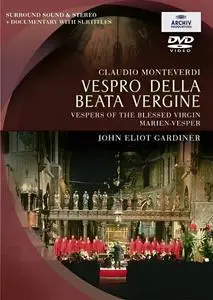
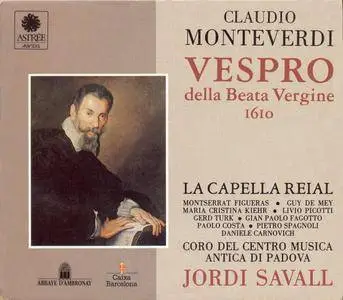
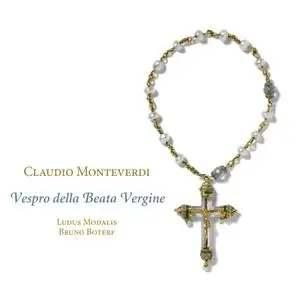
![Monteverdi - Vespro Della Beata Vergine (Rinaldo Alessandrini) [2004]](https://pixhost.icu/avaxhome/42/79/002c7942_medium.jpeg)
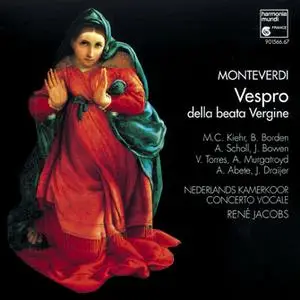
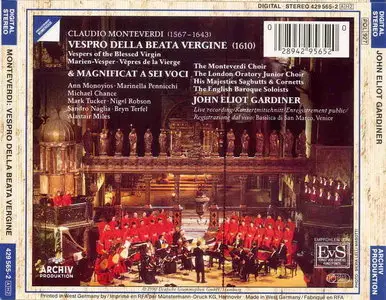
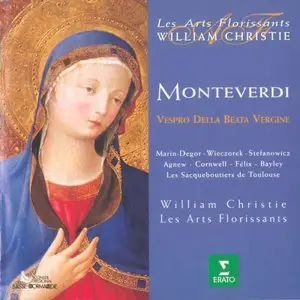
![Monteverdi - Vespro Della Beata Vergine (Gardiner) [DVD 9]](https://pixhost.icu/avaxhome/fd/13/001013fd_medium.jpeg)